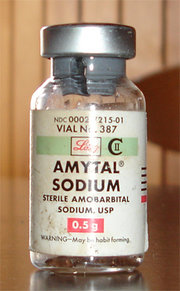Counting sheep into the wee hours can be an expensive activity. The annual medical and reduced productivity costs associated with insomnia among U.S. workers is estimated to be $92.5 to $107.5 billion, according to a survey conducted by the Washington-based National Sleep Foundation.
An estimated 60 million Americans suffer from insomnia, and this figure is expected to grow to 100 million by the middle of the 21st century. Some 47 percent of the people surveyed by the Sleep Foundation reported having sleeping problems, and the majority of those respondents claimed that sleep deprivation hurt their job performance. This suggests that the impact on overall health status has largely been ignored by both physicians and patients.
Nighttime insomnia goes hand in hand with impaired daytime functioning because of physical and mental fatigue, the latter demonstrated by memory loss, difficulty concentrating and irritability. The annual cost of insomnia-related productivity losses was estimated at $41 billion, based on a 4 percent reduction in productivity among the 42 million working Americans affected by insomnia. This amount is conservative as it only considers loss of productivity among those earning an income.
Accidents--some catastrophic--also increase with insomnia. A report prepared for the National Commission on Sleep Disorders Research explored the economic implications of sleepiness in relation to accidents. Accidents are the fourth leading cause of mortality, and motor-vehicle accidents account for 51 percent of all accidental deaths. Sleep-related accidents were linked to over 23,000 fatalities and as many as 2.5 million disabling injuries a year, along with annual costs of $43 billion to $56 billion.
WHAT IS IT, WHO'S AT RISK?
Insomnia is not defined by the number of hours of sleep a person gets. Rather, it is the perception or complaint of inadequate or poor-quality sleep because of one or more of the following:
* difficulty falling asleep
* waking up frequently during the night with difficulty returning to sleep
* waking up too early in the morning
* unrefreshing sleep
The condition is found in men and women of all age groups, although it seems to be more common in women (especially after menopause) and in people over 60. The ability to sleep, rather than the need for sleep, appears to decrease with advancing age. A history of depression increases the likelihood of insomnia, as do conditions such as stress, anxiety, chronic medical problems and the use of certain medications.
WHAT KEEPS YOU UP--AND LETS YOU REST?
Short-term insomnia lasting from a single night to a few weeks is referred to as transient. If episodes of transient insomnia occur from time to time, the condition is said to be intermittent.
Both classifications are often triggered by temporary changes in an individual's environment or by sleep/wake schedule disruptions such as jet lag. Stress and medication side effects are common contributing factors, as are environmental noise and extreme temperatures. Respondents to the Sleep Foundation's survey also cited pain as a frequent cause of sleep deprivation.
Transient and intermittent insomnia may not require treatment since episodes last only a few days at a time, and the person's biological clock will often get back to normal on its own. For some people who experience daytime sleepiness and impaired performance, short-acting sleeping pills may improve sleep and next-day alertness.
Insomnia is considered chronic if it occurs on most nights over a span of a month or more. This more complex condition often results from a combination of factors, including underlying physical or mental disorders. One of the most common causes is depression. Other underlying causes affect all of the body's systems and include arthritis, kidney disease, heart failure, asthma, sleep apnea (cessation of breathing during sleep), narcolepsy (chronic falling asleep during the day), Parkinson's disease and hyperthyroidism.
Chronic insomnia may also be due to behavioral factors, including the misuse of caffeine, alcohol or other substances, disrupted sleep/wake cycles as may occur with shift work or other nighttime activity schedules and chronic stress.
Habits also come into play. For instance, expecting to have difficulty sleeping and worrying about it evidently perpetuates insomnia in some people. So can ingesting too much caffeine or drinking alcohol and smoking cigarettes before bedtime. Excessive napping in the afternoon or evening can prolong existing insomnia, as can irregular or continually disrupted sleep/wake schedules. These behaviors may also be responsible for causing the sleeping problem in the first place, and simply stopping them may be the most effective solution.
Treatment for chronic insomnia begins with diagnosing and treating underlying medical or psychological problems and stopping or reducing behaviors that may worsen the condition.
Sleeping pills may be prescribed, but long-term use is controversial. Clinicians generally favor the lowest dose for the shortest duration needed to relieve the sleep-related symptoms. For some of these medicines, the dose must be lowered gradually when treatment is complete, as abrupt discontinuation can cause insomnia to recur. See the table at left for a list of drugs used in treating insomnia.
CAN YOU THINK YOURSELF TO SLEEP?
Beyond medication, there are behavioral techniques that can improve sleep. Relaxation therapy, for instance, can reduce or eliminate anxiety and body tension. As a result, the person's mind is able to stop "racing," the muscles can relax and restful sleep can occur. It usually takes much practice, however, to learn specific techniques and achieve effective relaxation.
Some people with insomnia spend too much time in bed unsuccessfully trying to sleep. They may benefit from a sleep restriction program that at first allows only a few hours of sleep each night. The time is increased gradually until a normal night's rest is achieved.
Another treatment that may help is to recondition the insomniac to associate the bed and bedtime with sleep. For most people, this means not using their beds for any activities other than sleep and sex. As part of the reconditioning process, the person is usually advised to go to bed only when sleepy. If unable to fall asleep, the person is told to get up and only return to bed when he or she is sleepy. Throughout this process, the person should avoid naps and wake up and go to bed at the same time each day. Eventually the body will be conditioned to associate the bed and bedtime with sleep.
Insomnia is an extremely Common symptom, both by itself and in the context of other medical and psychiatric disorders. People often try to ignore the impact of insomnia, and society frequently overlooks its clinical and socioeconomic ramifications. As a result, insomnia is under-appreciated and almost certainly undertreated--a serious lapse in health care delivery. The consequent reduction in ability to function, both physically and psychologically, not only reduces the individual's quality of life but also adds substantial cost to the national economy through poor job performance, absenteeism and accidents.
Drug treatments for insomnia
With the exception of the antihistamines, which are sold over the counter, all of these medications have the potential for abuse. The barbiturates and the hypnotic agent glutethimide require the greatest caution.
(*) Prices vary depending on whether the OTC purchased is a generic or branded product.
Note: For a complete list of the studies used in developing this report, please fax your request to the Business & Health editorial office at 201-722-2490.
Marilyn Dix Smith is director of Health Decision Strategies, Princeton, N.J., 609-770-0500. William McGhan is professor, Philadelphia College of Pharmacy and Science. They are, respectively, executive director and founding president of the Association for Pharmacoeconomics and Outcomes Research.
COPYRIGHT 1997 A Thomson Healthcare Company
COPYRIGHT 2004 Gale Group



